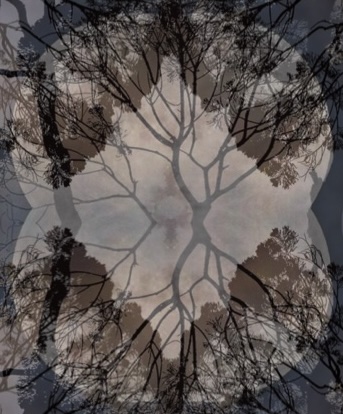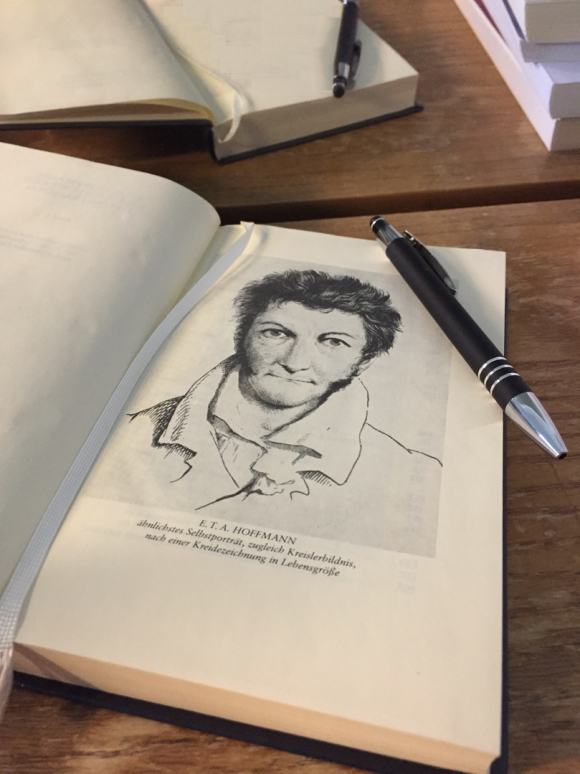I’m still in the process of deepening the analysis of the death of Damocles episode. I’ve just introduced new bits of terminology, distinguishing figurations from configurations, and clarified some of the more technical metaphysical details; now I’ve started exploring how they work together.

11. The metaphorical in “metaphorical interrelations” is more on the conceptual than on the linguistic level. But this is not all we should be aware of here. So far, I have presented our guiding scenario by simply positing two events: the death, and the clock stopping. This has framed our discussion naturally as about “some kind of story”: a simple one that by definition comprised these two occurrences. But we should take note that this two-event set or structure came about by virtue of the framing. I started talking about this scenario, and described the two events, and when I stopped introducing more events (and consistently maintained that throughout discussion of the scenario), I created the impression that that “was it”: that the inventory of our scenario is made up of just those two events, as already given from the start. (As was the metaphorical connection between them.)
This framing, however, and the resulting impression, obscure some of the more interesting roles the metaphorical connection between the events might also play. One is discovery: Cassandra, when noticing the clock has stopped, might have been led to realize that Damocles had just died, precisely through noticing it. Much depends on context here: if Cassandra had been aware for a while of Damocles’ declining health, and more or less expected his imminent death, the meaning she’d realized would have been something like “Now it’s happened…”; but if the situation was different, and Cassandra had never thought about (let alone accepted) it as something that might occur soon, then it would have been a much more striking realization (“Suddenly I knew Damocles was dead…”). Of course, having been around him, she might have picked up on one or another subtle cue subliminally (without consciously acknowledging it or reflecting about it), building what is often called “an intuition”; or she might even have started repressing the thought, pushing it away decisively whenever it was creeping into her mind. In that sense, she’d have been “unconsciously prepared” for the realization, and the moment of recognition merely brought it home. It is even possible that a metaphorical expression, for some or the other psychological reason, would be more likely to bring the realization about than awareness of the literal event. (This is not as far-fetched as it sounds: people can be in denial quite strongly about what is actually the case, yet open and receptive to some suitable metaphorical framing; a range of techniques in ministry and psychotherapy are based on that insight.) Either way, here the metaphorical connection between these events works more like a guiding force towards discovery: one starts with one of the events, and gets to the other via the uptake of the metaphorical connection.
The same process can unfold for a reader in a novel: you, as the author, might have seeded the likelihood of Damocles’ death, without making it too obvious, have him unexpectedly brought to the hospital in the afternoon, and then abruptly end the chapter by merely telling the reader about the stopping of the clock. The reader, then, would be in the same situation, with respect to psychological uptake, as Cassandra: somewhat prepared, more or less willing to acknowledge where this is driving at, and finally being shocked, via the metaphorical connection, into realizing the eventual death. (In that case, we’d be told explicitly only about the one event, that of the clock stopping, and the literal happening remains implicit.)
And this is very different from the analytical stance we’ve taken so far, where I have introduced the two events, as it were, by way of inventory, and only afterwards made their metaphorical connection explicit. This is how logical or linguistic analysis proceeds: the relation is then a two-place predicate applied to something (in this framing) already given. But it’s not the only way of looking at it; if it so appears, that’s an artifact of our discussion (and my presentation), not something inherent in the situation.
Thus we have found that the metaphorical connection between events (which belongs to the figuration) can have different functions in the psychological uptake (which makes the figuration part of a configuration). Let’s call the two functions we have now discussed discovery and application, respectively. Apart from these, there is a third one, one we’ve already come across: selection.
In the real-world variants of the scenario, we get a story only when one of the people involved with the situation tells us one. (In most actual cases, this happened by verbal transmission, until it perhaps ended up in a local newspaper or a researcher’s body of materials, from where we can pick it up today out of those immense historical records our “information societies” have amassed.) And it becomes a story worth telling, one that is remarkable enough in itself, if there is an interesting coincidence in it. The events in the story that eventually gets told are selected for that very reason; they got retold, perhaps because of the rareness of the incident, but more likely because of its striking structure in terms of the internal connections between the events — because, that is, of what I have called its configurational content.
When the teller of the story picks a figuration, i.e. a set of events with their metaphorical interconnections, and thus creates a configuration, it’s again these interconnections which drive the psychological uptake, though this time not navigating, so to speak, from one event to the other (as with the discovery function), but rather towards unifying them into a configurational gestalt. It’s not an in-story movement, but a movement from within the story outwards, to redirect the perspective, now looking at it as a whole.
We have encountered this move from an in-story perspective to a perspective onto the whole of the story before: once more we have here different routes of interplay between the metaphorical connection and the psychological uptake, which however still end up with the same overall result. As a reader, you may witness a number of events, their connections, and then some character’s uptake; or you may witness events and their connections and do the uptake yourself. In the first case, there is another step of empathy; in the second case, there is instead a step of reflection. In the real-world case, of course, it’s neither: there, the uptake happens directly with the person who does it. What requires an extra step there is the selection, and the bringing of it all into a narrative shape that gets retold.



